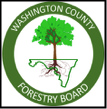Plant a Tree . . Or Two Or Three
The nation’s forests are a strategic national resource that provides a host of important benefits: clean air and water, fish and wildlife habitat, recreational opportunities, carbon sequestration and storage, renewable energy, and forest products.
While large unbroken tracts of forest are important, even a single tree provides many of the functions of forests listed above. It will clean the air and stabilize the land with its roots. Insects will feed upon the leaves and birds will build their nests within its branches. It will sequester and store carbon. We may climb in it, swing from it, or simply rest beneath it, enjoying its shade and the pattern of branches against the sky. If the course of its life leads to its necessary removal, it may provide quality forests products.
If you have some space in your yard, consider planting a tree. They come in wide variety of types, shapes, and sizes to fit the available space and your desires. If you have a very large yard, consider planting one or more groups of trees: some to grow large, and some smaller trees or shrubs to grow beneath the branches of the taller trees. If you place a few attractive rocks on the ground, maybe an old log, allow the fallen leaves to remain, you will soon have a real forest floor, home to amphibians, beetles and more.
If you have a very large lawn, you might consider allowing some of it to revegetate naturally. Trees will grow naturally, and you can control it as much or as little as you like. It is a good idea to make sure that non-native invasive plants don’t establish themselves.


Natural Revegetation of a field, with occasional mowing to keep some areas in grasses and herbaceous plants
Eastern White Pine, A fast growing species native to Maryland
Online resources:
Maryland's 5 Million Tree Initiative; Also See MD Forest Service Programs & Resources
Marylanders Plant Trees http://www.trees.maryland.gov
For wild backyards: http://dnr.maryland.gov/wildlife/Pages/habitat/wildacres.aspx
State Nursery: http://dnr.maryland.gov/forests/Pages/nursery.aspx
On How-To Tree Planting: http://dnr.maryland.gov/forests/Pages/mdfacts.aspx
Checkout this related page on our website: Lawn_To_Garden
